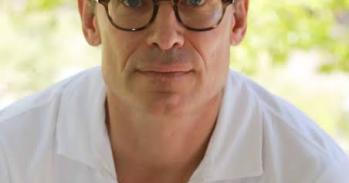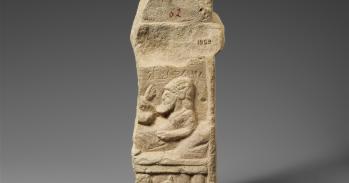
A collection of artefacts made by prisoners from the Channel Islands in World War II has gone on display in Jersey to mark the 70th anniversary of the Channel Island deportations, with the help of a Cambridge researcher.
A collection of artefacts made by prisoners from the Channel Islands in World War II has gone on display in Jersey to mark the 70th anniversary of the Channel Island deportations, with the help of a Cambridge researcher.
The artwork and handicrafts internees made are a testament to the importance of creativity in ensuring the survival of internment.
Gilly Carr
Of the 2,200 Channel Islanders who were deported by the Nazis during World War II, most spent the war with little news of Allied progress, and uncertain about when it was all going to end.
It was just one of several psychological burdens they had to endure. Crammed into internment camps hundreds of miles from home, these British citizens spent years in relative isolation, feeling frustrated, anxious and often simply bored.
The best way to stop themselves from becoming depressed was to find something else to do, and they found a solution in recycling the parcels that were periodically delivered to the camps by the Red Cross. Many prisoners became accomplished craftsmen, transforming parts of these parcels, or their contents, into toys, crockery, everyday objects to help their survival, and games. When they were liberated at the war’s end, these items returned with them to the islands. Some found their way into archives and museums; others remained in private homes.
Since 2006, Dr Gilly Carr, an archaeologist at the University of Cambridge, has been studying this material record. Now she has both co-edited a book on the subject, called Creativity Behind Barbed Wire, and curated an exhibition, which has opened at Jersey Museum and will be open to the public until the end of 2012. This year marks the 70th anniversary of the first wave of deportations of Channel Islanders to internment camps in Germany.
Carr believes that, just like the “trench art” created by soldiers who fought at the front during World War I, these objects can open a window on to the eyewitness experience of aspects of World War II.
“For these internees, the future stretched ahead, seemingly without end,” she said. “Many of them assumed or hoped that the Allies would win the war, but there was no certainty when or if this would happen. Time rapidly began to weigh heavily on their minds. We can learn a lot about the experience from letters and diaries, but sometimes the most poignant tales are told by the artwork and handicrafts they made. They are a testament to the importance of creativity in ensuring the survival of internment.”
The occupation of the Channel Islands remains a relatively unacknowledged chapter in Britain’s wartime history, although Carr’s research - which extends far beyond the study of prisoners alone - has done much to reawaken interest in the subject.
Oddly, the deportations themselves, which began nearly 70 years ago, in September 1942, had their causal origins in the Middle East, where the British had invaded Iran and subsequently deported German citizens working there. An outraged Hitler decided to conduct a similar policy in the Channel Islands as an act of retaliation.
The Germans started by targeting men between the ages of 16 and 70 who were not born in the Islands, and their dependents, regardless of their place of birth. Those from Jersey went to Wurzach, in southern Germany, and those from Guernsey went to the nearby town of Biberach after several weeks in a transit camp at Dorsten. Many unattached men went to a camp at Laufen and, later on, single women were transferred to Liebenau camp. A number of islanders were sent to other camps.
A second wave followed in 1943, and included people who had avoided the first round of deportations, as well as British Jews, former servicemen, and so-called “undesirables”, who had committed acts of resistance. A number of people from Sark were also deported in retaliation for a commando raid which had occurred on the island the previous autumn, and in which several Germans were killed in a brief firefight around the local Dixcart Hotel.
These prisoners were sent to various camps in south Germany via a transit camp at Compiègne, just outside Paris. There they encountered French Jews, who were en route to the concentration camp at Auschwitz, and witnessed acts of cruelty by German guards which implied the far worse fate that awaited their Jewish fellow-deportees.
The experiences of the Channel Island prisoners themselves, were, however, far from easy and many struggled with their psychological impact. Preston John Doughty, a Jersey deportee, recorded in his diary on the day that he arrived at Wurzach, that: “the state of the place and our rooms were like pigsties and so, everywhere we went, tears began to flow... Scrubbing of floors, doors, tables, chairs and, in fact, the whole place was undertaken to make it a fit place to live in. My room was like a large barn and in it they put 46 men to eat and sleep.”
The Red Cross parcels the Channel Islanders received from December 1942 onwards fast became a lifeline not only because of the food they contained, but also because they gave their overactive and anxious minds something to focus on.
The creations that they produced were often small works of art. Nothing was wasted: Parcel string was made into clothing or bags, cardboard was reused to make toys for children, the wooden crates were turned into items of furniture or games, and tins were made into sports trophies, hair curlers and even a communion chalice.
Today, a rich collection of these items still exists in homes and archives across the Channel Islands, and Carr has been able to assemble many of them for the Jersey exhibition. Together, they speak to the visitor about more than just the experience of life in a German prison camp. Many prisoners personalised their creations with markers of their own identity, or “V” for victory symbols that spoke of a type of symbolic resistance.
The choice of things the prisoners made is also significant. The creation of boxes and containers speaks of a lack of privacy in a context where people slept in the same room as 40 or 50 others, perhaps even more. Hunger is a running theme of the exhibits, often combined with a bleak sense of humour about the poor quality of the soup and bread they were fed, and the bodily consequences of consuming it.
The Jersey exhibition follows a similar display in Guernsey in 2010, but features new items relevant to the island as well as a number of different features. Carr worked with internees and designers as well as museum staff to tell the stories of people relevant to the island through a combination of words, exhibits and blown-up images. Movingly, the entrance to the whole exhibition features the names of the deported on one side and, on the other, a larger-than-life image of the announcement of the deportations in the Jersey Evening Post.
“Many of these people did not know how they would or could survive and so had to make objects that could help them endure and survive internment,” Carr added. “My research has shown that the objects they made were not just ephemeral ‘pretty items’ – rather, they were central to the ability of internees to survive emotionally, psychologically and physically. Many of these objects speak to us so powerfully 70 years on because the internees could not voice or act out their anger, frustrations and anxieties in the normal way. Instead, they poured their emotions into the objects they made – they provided a safe receptacle.”
Occupied Behind Barbed Wire will be on show at the Jersey Museum until 30 December, 2012. Gilly Carr’s latest book, Creativity Behind Barbed Wire, is co-edited with Harold Mytum and is published by Routledge.
This work is licensed under a Creative Commons Licence. If you use this content on your site please link back to this page.





